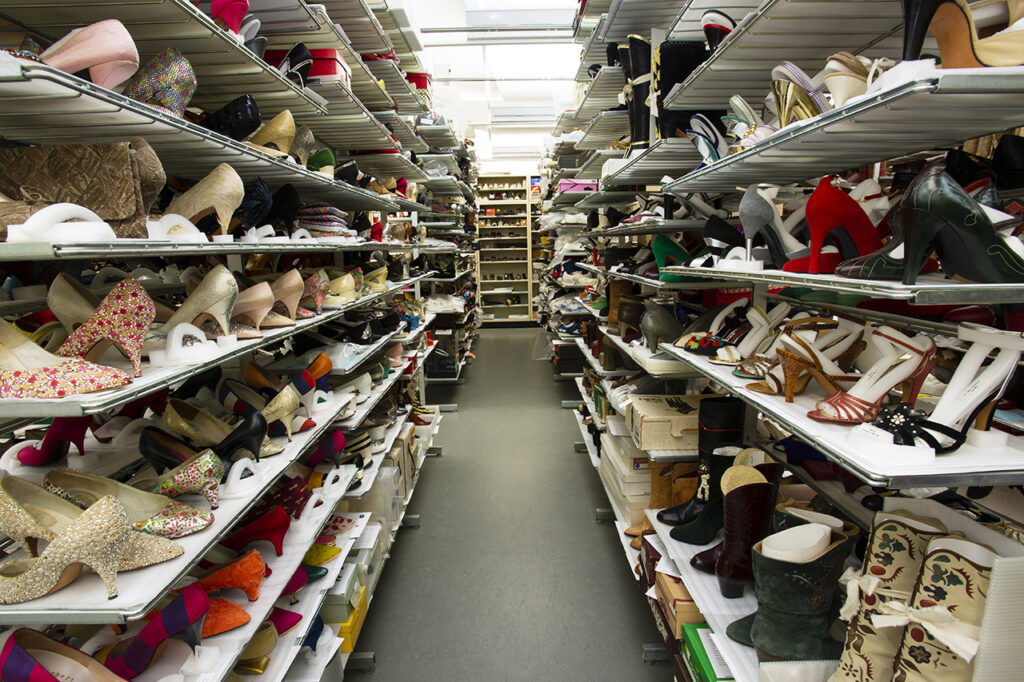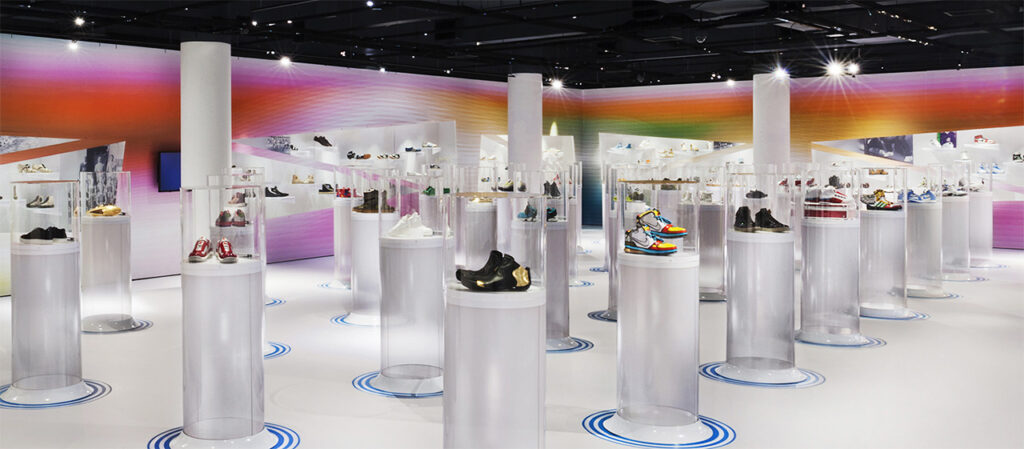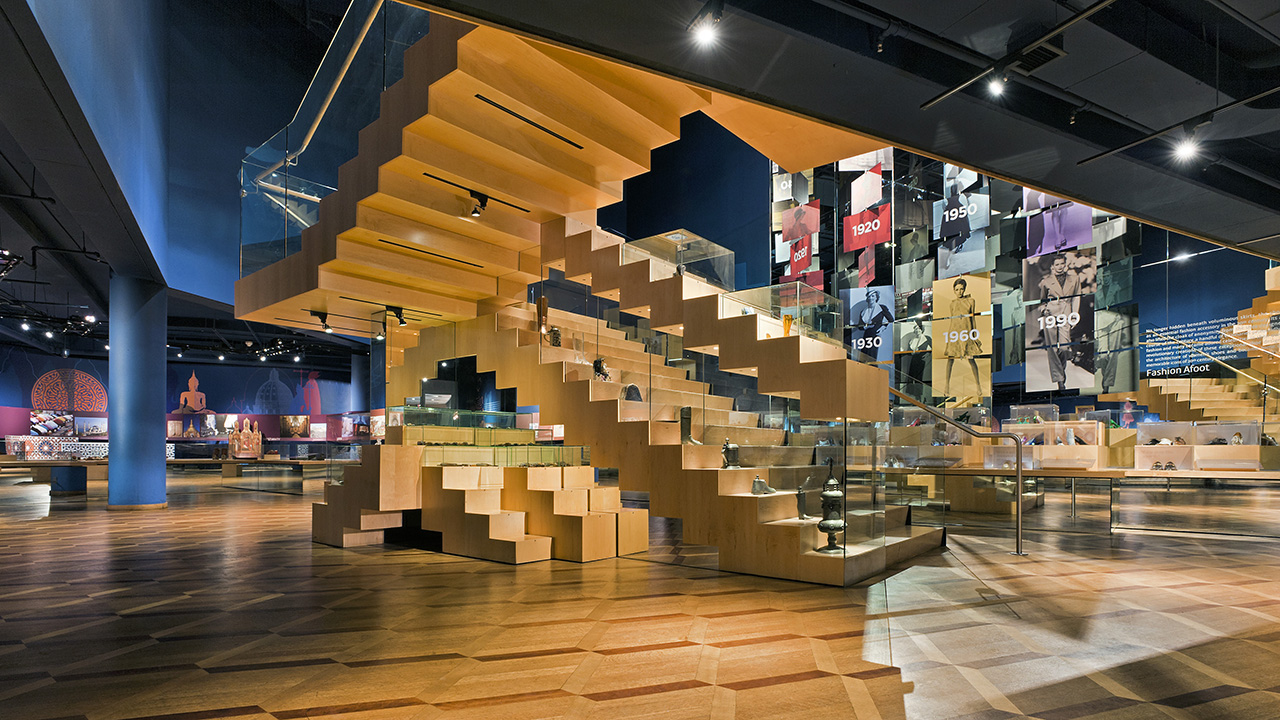What’s in a shoe? Everything, according to Elizabeth Semmelhack.
As senior curator and creative director of Toronto’s Bata Shoe Museum, Semmelhack has spent the past 20 years delving deep into footwear — from Native American moccasins to Louboutin heels — to uncover signs and traces of their time, place, and culture. “I do think footwear allows for an unexpected way to bring insight,” she tells Jing Culture & Commerce.
Among her many endeavors, she’s explored 20th century shoe design in Icons of Elegance, Roger Vivier’s storied career in Roger Vivier: Process to Perfection, and the waxing of sneaker culture in the blockbuster traveling exhibition Out of The Box. Along the way, the institution’s collection has grown in size and scope to encompass more than 14,000 artifacts representing a world of cultures.

The museum’s 14,000-strong holdings span more than four millennia, encompassing artifacts from handmade to designer-made shoes, circumpolar to celebrity footwear. Image: Copyright © 2021 Bata Shoe Museum, Toronto, Canada. All rights reserved.
Last year, the museum marked a milestone: its 25th anniversary. While lockdowns put the brakes on physical celebrations, Semmelhack nonetheless saw the release of The World at Your Feet, a book documenting the institution’s collection in 100 shoes, and the launch of The Great Divide, an exhibition on Enlightenment-era footwear. The museum’s staff also rallied for online exhibitions, virtual workshops, and a revitalized blog. Notably, Off The Shelf, Bata Shoe Museum’s newly introduced TikTok series, garnered over a million views at launch and remains a popular feature.
Though the institution’s doors remain shut for the moment, the historian continues to contemplate shoes — particularly how the pandemic might sway fashion tastes. “I think the longer you’ve been in comfortable attire,” she tells us, “the harder it is to go back to restrictive pieces.” Below, Semmelhack shares more of her perspective on shoes and footwear trends, and her goal to reveal the world at our feet.
How did the Bata Shoe Museum’s digital transformation over the past year play out?
It was very interesting to pivot, as all institutions were doing, into the digital world. When the lockdown first happened, we were in a very naive state of not understanding how long-lasting this would be. We hadn’t ever engaged online to the degree that we are now, so what’s been amazing is how many people from around the world are engaging with us digitally. Once this is over, we certainly will continue to pursue digital engagement.
How would you describe your personal mission as senior curator and creative director at the museum?
The reason why I love working at the Bata Shoe Museum is that footwear is very unintimidating. It’s not an aspect of material culture that the general public is unfamiliar with. But on the other side of that coin, because it is footwear, people might think that they know everything about shoes since they have worn them themselves. What I really want is for people to realize that shoes reveal an incredible amount about the society in which they were made and worn. My mission is to help people see these larger cultural ideas and issues through the work that we do.
When did you first consider footwear something worth studying?
I had a wide range of interests and education, and I came to the museum not knowing what to expect. The collection was so wide-ranging and remarkable, and I learned that footwear had not been taken seriously academically. One of the first questions I asked was, “Why the high heel?” not really knowing that no work had ever been done on it. It allowed me to begin to work on what was almost an invisible form of footwear that was everywhere, expected and required to be worn by half the population for all these cultural reasons. The second I opened the door to that research, I was hooked. It’s been 20 years and I have more questions than when I started.

Arraying more than 120 iconic sneakers, Out Of The Box plumped the archives of sneaker legends like Nike and Reebok, and featured interpretations by designers from Prada to Lanvin. Image: Bata Shoe Museum
Out of the Box: The Rise of Sneaker Culture was such a watershed in footwear exhibitions. What did you observe about sneaker culture that made you feel it was due an exhibition?
It actually related to my work in high heels. When I started looking at high heels in the early aughts, there was a lot of cultural pressure and commentary about women being almost biologically predispositioned to love shoes. But I kept thinking about sneakers and why they weren’t discussed in the same terms. I turned to sneakers as a means of showing that these assumptions about women and footwear consumption were unfounded — that footwear consumption wasn’t biological; it was human and related to constructions of gender.
What do you make of how sneakers have become such a luxury item, readily arrayed alongside other footwear like designer heels?
When I did Out of The Box in 2013, it ended up traveling in 2015 and stopped in 2017 — a great deal changed over that period. When I first curated the exhibition, there were a lot of women banging on the door of sneaker companies demanding sneakers in their sizes. Now, women have become more inculcated into the culture. They’re turning to sneakers and away from heels because high luxury sneakers are able to do a lot of the work that high heels had been doing in this century — by emphasizing status and being hyper-fashionable, but being a little more comfortable.
How has your work as a footwear historian changed the way you view shoes?
I think if you spend your entire working day or waking hour thinking about cultural meanings embedded in the clothing choices made by others, you know that one, when people find out what you do, they’re going to look at your clothing and footwear; and two, you know that every choice you make has some kind of cultural meaning. So I find myself more paralyzed when it comes to shoe shopping. I have very few shoes, I’m not a huge collector, and I think what I have is pretty boring and plain. The shoemaker’s children have no shoes!



